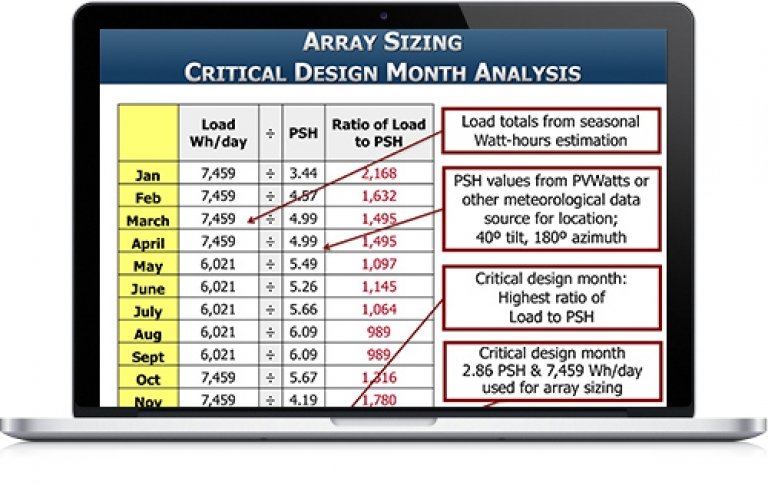Booking options
£530.53

£530.53
On-Demand course
All levels
Define terms used in stand-alone systems
Name common applications for stand-alone systems; describe basic component layouts
Describe differences between AC and DC coupling
State principle elements of a microgrid
Define the importance of an accurate load analysis
Review load analysis procedures; perform a load analysis based on daily data
Review battery bank sizing for lead-acid and lithium-ion battery types
Define array sizing variables and how they affect design for both MPPT and non-MPPT charge controllers
Explain charge controller types and describe maximum power point tracking and voltage step-down
Examine the calculations for PV array sizing
Describe the difference between sizing for a non-MPPT and an MPPT charge controller
Complete array configuration calculations for a system with a non-MPPT and an MPPT charge controller
Summarize the parameters to check when selecting a charge controller
Explain the purpose of DC load control and the three ways it can be implemented
Identify design variables, advantages, and disadvantages of DC-only PV systems
Describe how to size and integrate components for a recreational vehicle (RV) application
Identify installation and maintenance considerations specific to mobile applications
Identify applications and considerations for DC lighting systems
Specify a battery-based inverter given electrical load and surge requirements
Describe various configurations for stacking and clustering multiple inverters
Examine inverter / charger size considerations
Describe multiwire branch circuit wiring and concerns with single-phase supplies
Describe the purpose and function of a generator
Identify considerations that impact generator selection
Solve for location-based performance degradation
Specify a generator given electrical load, battery charging, and surge requirements
Estimate approximate generator run time
List generator maintenance
Describe the National Electrical Code (NEC®) Articles that apply to the different parts of PV and energy storage systems (ESS)
Identify NEC® requirements for workspace clearances, disconnects, and overcurrent protection devices (OCPD) that apply to PV systems
Locate and apply specific requirements for storage batteries, stand-alone systems, and energy storage systems
Identify labeling requirements
List relevant building and fire codes
Review installation considerations and best practices for stand-alone systems as related to batteries, design strategies, monitoring and metering, balance of system (BOS) equipment
Review DC-coupled stand-alone residential system design
Define operating modes of off-grid AC coupled PV systems
Explain charge regulation of AC coupled PV inverters in a stand-alone system
Discuss AC coupled PV system design strategies; evaluate equipment options for AC coupled off-grid applications
Design a stand-alone microgrid system with PV (AC and DC coupled) and generator power sources
Distinguish between isolated and non-isolated microgrids
Compare concepts of centralized versus decentralized generation and controls
Identify different types of microgrid analysis and planning software
Review isolated microgrid use case examples
Identify general PPE for battery system maintenance
Develop a battery maintenance plan
Identify methods to measure battery state of charge
Identify common causes of battery problems and how to avoid them
Identify PPE for lead-acid battery maintenance
Develop a battery maintenance plan for lead-acid batteries
Describe how to correctly add water to a flooded lead-acid (FLA) battery bank
Identify methods to measure battery state of charge of FLA batteries
Define when and why equalization is needed
Identify common causes of battery problems and how to avoid them
Note: SEI recommends working closely with a qualified person and/or taking PV 202 for more information on conductor sizing, electrical panel specification, and grounding systems. These topics will part of this course, but they are not the focus.